Reflecting on last week’s attendance to the successful Amenity Forum Conference, I thought this week’s blog could have an in depth look at the IPM strategies that we now have available.
After listening to the wealth of knowledge and talent speaking at the conference, it made me realise how vast and diverse our industry is and the problems it faces in the battle to control weeds, pests and diseases. As a qualified BASIS registered advisor AR/E/0445/A myself, I know only too well the many protocols, regulations and assessments that need to be made before applying and using an approved chemical.
And more to the point, I realise that we should be assessing all the alternative strategies that could be used to help reduce or prevent the presence of weeds, pests and diseases. However, as prevention is better than cure, there are many considerations, issues and management strategies you can perhaps undertake beforehand.
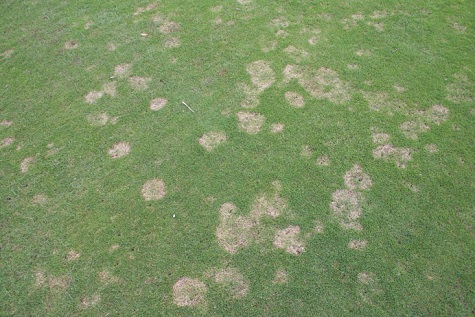
We as, turf professionals over time acquire many skills and experiences that come into play when dealing with turf related problems. I listened with interest to technical manager for Colliers Turf Care, Chris Humphreys’ presentation on IPM strategies at the conference, where he spoke about four key areas of influence to consider when trying to maintain a healthy sward.
I have used four of Chris’s slides to emphasise the complexities and full range of activities grounds professionals must undertake to deliver their desired outcomes for the various given playing surfaces they manage.
These being the management of:
- Environment
- Cultural Activities
- Nutrition
- Fungicides
If we talk about controlling diseases in turf, there are plenty of strategies that we can undertake to prevent the onset of disease. First and foremost, you must know what you are dealing with and the damage that can be inflicted and the consequences of a bad disease attack.
Therefore, you will need to know and understand the life cycle of the particular disease, understand the disease triangle and then begin eliminating the primary factors that will cause an outbreak of disease. If we look at the most common disease on golf courses, Microdochium Patch (Fusarium), for example, we will typically find resting spores in the thatch; spores deposited on the leaf surface by wind or rain splash; recently germinated spores growing mycelia and seeking an entry point into the leaf.
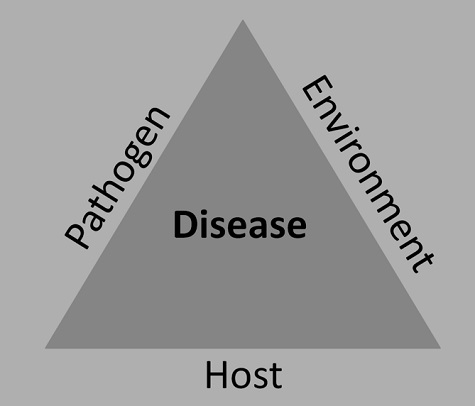
Once you understand the disease’s lifecycle, the aim then is to break this cycle and prevent conditions that promote disease. However, there are many practices and management decisions that can be undertaken to prevent or slow down the incidence of disease.
Plant diseases can be analysed conveniently using the concept called the ‘Disease Triangle’. This places the three factors which must interact to cause plant disease at the three corners of a triangle. Those three factors are:
- susceptible host,
- disease causing organism (the pathogen)
- favourable environment for disease
The host is the plant itself; some can fall victim to many diseases, others only suffer particular ones. So all plants have a range of susceptibilities to a range of diseases. The pathogen is the disease. Diseases of plants are most often caused by fungi but there are some plant pathogenic bacteria and viruses.
Without the right host in the right conditions, pathogens cannot cause any harm. Some pathogens are specific to only one or a few host plants, others have broad abilities to attack almost everything. The favourable environment essentially means the weather conditions needed for a pathogen to thrive often during warm moist conditions it becomes a favourable environment for disease.
As with all turf related work practices the weather has a great influence on the timing and influence of what can be done and achieved, Groundsmen spend every working day thinking about the weather forcasts and what weather fronts they have to work to. In recent years we, via the development of internet apps, are able to forcast the weather more accuratly. Companies such as Syngenta, and Headland Amenity developed a range of weather apps to help turf professionals plan their work programmes.
We then have the Likes of Rigby Taylor, Bayer and Collier Turf Care and many other companies giving out relevant information to help make the right decisions.
Disease results only if all of these three things occur simultaneously; if one or more of the factors is not present, then disease does not occur.
The four following diagrams are four key areas of turf management that we need to address to reduce the likelihood of the onset of a disease outbreak.
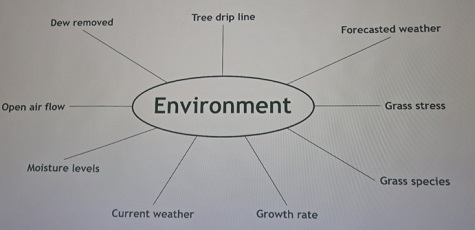
Under the banner of environment we can see a number of aspects we can control. Growth rate, current weather, moisture levels, open air flow, dew removal, tree drip line, forecasted weather, grass stress and grass species. For example, the simple task of dew dispersal using brushes and swish canes will help keep surfaces drier, the application of wetting agents and aeration work will enable soils to drain more quickly.

Carrying out appropriate cultural activities (practices) will also help ensure the grass plant is in a better condition to fight off and recover from the outbreak of disease. Controlling thatch levels, regular aeration work and top dressing will help.
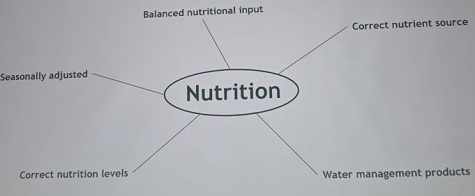
Under the nutrition banner we need to ensure we carry out an appropiate feeding regime to aide plant health. These days this is done by the application of several feeding regimes based on a little an often approach using both granluar and liquid feeds.
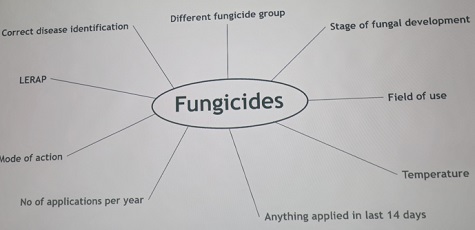
And finally, we can use a range of chemical products that will enhance soil conditions along with what fungicide products we have left to give us the control of any potential disease outbreaks. The timing of application of any chemical treatment is crucial to its effectiveness.
Bayer have a team of turf professionals on hand to help advise on the use of pesticides and fungicides.
Summing up, the main management tool for controlling Pests and Diseases is, by definition, an Integrated Pest Management strategy (IPM) that comprises of a number of tasks and checks, providing a comprehensive approach to controlling insects, weeds and pathogens in an economical and environmentally friendly way, using a wide range of resources, skills and services.
The disease triangle is a concept of plant pathology and is based on the principle that disease is the result of an interaction between a host, a potential pathogen and the environment or weather conditions. Plant disease is prevented by elimination of any one of these three causal components.
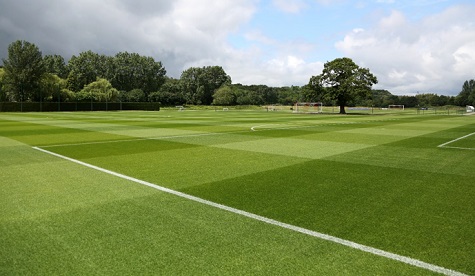
Keeping the sward healthy and reducing the conditions that favour disease will be the first priority to keep disease from your turf. The following actions should help you achieve this:
- Carry out programmes of aeration to help keep the surface free draining.
- Inspect and monitor existing surface water drainage systems; ensure that they are working.
- Prevent moist conditions remaining on the surface by brushing/sweeping/switching the playing surface (remove dew).
- Apply a balanced fertiliser to keep the sward healthy. A soil analysis will identify fertiliser requirements.
- Control thatch layers as thatch provides a good environment for the disease. Reduction of thatch by hollow coring and scarification.
- Reduce the return of clippings. An accumulation of dead matter will increase thatch.
- Maintain Soil pH between 5.8-6.5; do not allow the soil to become alkaline.
- Check mowing heights and keep blades sharp.
- Be vigilant and treat the disease early to prevent severe attacks. Treat with approved fungicides.
- Reduce shade.
Who said we only cut grass?!